Scientific name Lobelia Rank Genus | Higher classification Lobelioideae | |
 | ||
Lower classifications Lobelia erinus, Lobelia cardinalis, Lobelia inflata, Lobelia siphilitica, Lobelia chinensis | ||
Lobelia erinus lobelia
Lobelia (/loʊˈbiːliə, lə-/) is a genus of flowering plants comprising 415 species, with a subcosmopolitan distribution primarily in tropical to warm temperate regions of the world, a few species extending into cooler temperate regions. They are known generally as lobelias.
Contents
- Lobelia erinus lobelia
- Flower of the week lobelia
- Description
- Taxonomy
- Ecology
- Cultivation and uses
- Hybrids
- Traditional medicine
- Chemical constituents
- Adverse effects
- Diversity
- Mexican spurred lobelias
- Formerly placed here
- References
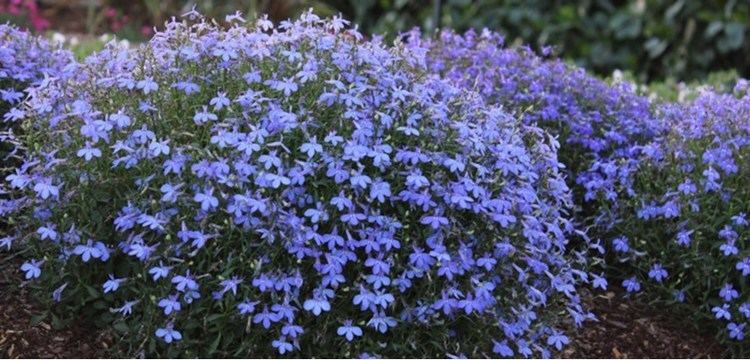
Flower of the week lobelia
Description

The genus Lobelia comprises a substantial number of large and small annual, perennial and shrubby species, hardy and tender, from a variety of habitats, in a range of colours. Many species appear totally dissimilar from each other. However, all have simple, alternate leaves and two-lipped tubular flowers, each with five lobes. The upper two lobes may be erect while the lower three lobes may be fanned out. Flowering is often abundant and the flower colour intense, hence their popularity as ornamental garden subjects.
Taxonomy
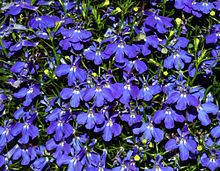
The genus is named after the Belgian botanist Matthias de Lobel (1538–1616). Some botanists place the genus and its relatives in the separate family Lobeliaceae, others as a subfamily Lobelioideae within the Campanulaceae. The Angiosperm Phylogeny Group did not make a firm decision on this, listing the genus under both families.
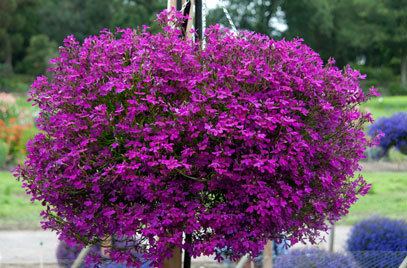
Lobelia is probably the base form from which many other lobelioid genera are derived; it is therefore highly paraphyletic and not a good genus in a cladistic sense. For example, the Hawaiian species (see Hawaiian lobelioids), currently classified in several genera, originated from a single introduction to a now-submerged Hawaiian Island 15 million years ago, probably from an Asian Lobelia in Lobelia subg. Tupa.
Ecology
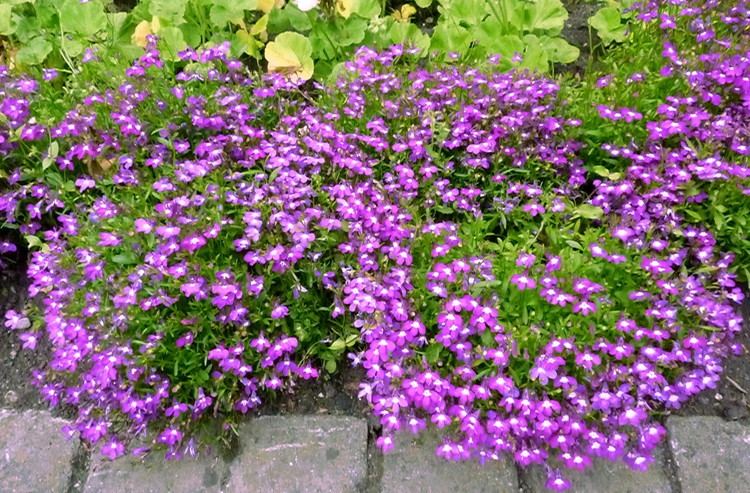
Lobelia species are used as food plants by the larvae of some Lepidoptera species including the Setaceous Hebrew Character.
Cultivation and uses
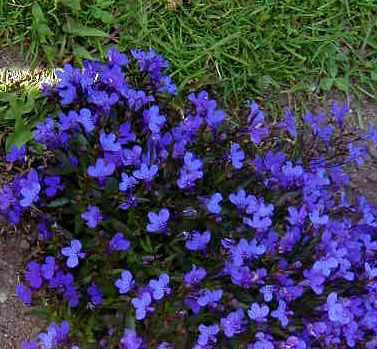
Several species are cultivated as ornamental plants in gardens. These include Lobelia cardinalis syn. Lobelia fulgens (cardinal flower or Indian pink), Lobelia siphilitica (blue lobelia), and Lobelia erinus, which is used for edging and window boxes.
Hybrids
Numerous hybrids have been produced, notably Lobelia × speciosa, a hybrid derived from L. fulgens, L. cardinalis & L. siphilitica. The term "fan hybrids" is also used. This plant is borderline hardy and requires fertile, moist soil. It is suitable for summer bedding schemes or growing in containers. The following cultivars have gained the Royal Horticultural Society's Award of Garden Merit:-
Traditional medicine
Native Americans used lobelia to treat respiratory and muscle disorders, and as a purgative. The species used most commonly in modern herbalism is Lobelia inflata (Indian tobacco). However, there are adverse effects that limit the use of lobelia.
Lobelia has been used as "asthmador" in Appalachian folk medicine
Two species, L. siphilitica and L. cardinalis, were once considered a cure for syphilis.
Herbalist Samuel Thomson popularized medicinal use of lobelia in the United States in the early 19th century, as well as other medicinal plants like goldenseal. The eccentric New Englander Elias Smith, a preacher and alternative medicine advocate, plagiarized much of Thomson's system. A unique feature of Smith's system was the identification of Lobelia (a.k.a. pukeweed) with the 'plant of renown' referred to in Ezekiel 34:29. Believing that the United States held eschatological significance, Smith believed that this plant was provided by God to democratize medical treatment, just as Smith's preaching was a democratization of theology.
One species, Lobelia chinensis (called bàn biān lián, 半边莲 in Chinese), is used as one of the fifty fundamental herbs in traditional Chinese medicine.
One unpublished study showed that lobeline—an alkaloid derived from lobelia—is ineffective in helping people to quit smoking after 6 weeks.
Chemical constituents
Extracts of Lobelia inflata contain lobeline, which can reverse P-glycoprotein-dependent drug resistance in certain tumor cell lines in vitro. Lobelia chinensis contains apigenin, lobeline, lobelanine, isolobelanine, lobelanidine, quercetin, coumarins, glucosides and various flavonoids.
Adverse effects
Because of its similarity to nicotine, the internal use of lobelia may be dangerous to susceptible populations, including children, pregnant women, and individuals with cardiac disease. Excessive use will cause nausea and vomiting. It is not recommended for use by pregnant women and is best administered by a practitioner qualified in its use. It also has a chemical known as lobellicyonycin, which may cause dizziness.
Diversity
Species include:
Mexican spurred lobelias
About eleven species native to Mexico and Central America have spurs on the flowers. These spurred lobelias appear to form a monophyletic group. Most have been classified in the genera Heterotoma (or sometimes Calcaratolobelia). However, since their closest relatives such as Lobelia anatina are in Lobelia, Koopman and Ayers classify them in Lobelia.
Partial list:
